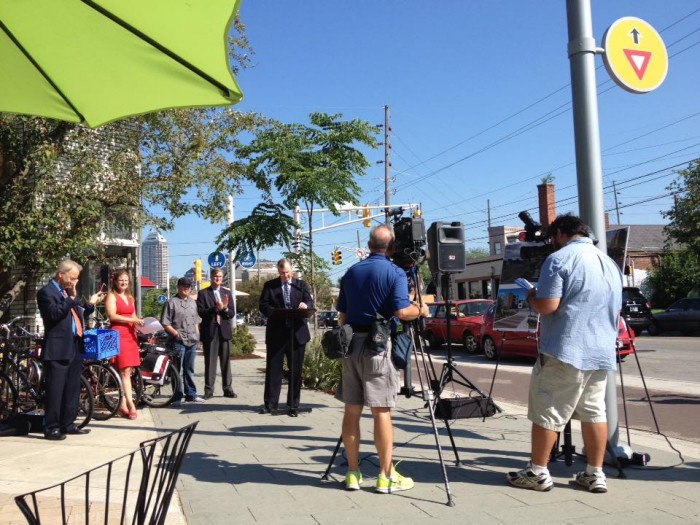On July 23, ICT, Inc. and the IU Public Policy Institute held a press conference to announce and celebrate the many ways, economic and other, that the Indianapolis Cultural Trail has impacted the city. The findings, from a report by the Institute on the initial economic and community impact of the Trail, found that property assessments within one block of the eight-mile Trail have increased 148% since 2008, an increase of $1 billion in assessed property value.
Mayor Greg Ballard addressed the crowd, “More than a decade ago, Brian Payne envisioned the Cultural Trail as a bold way to connect Indianapolis neighborhoods and cultural districts in new ways. You can look around today, especially on Virginia Avenue, and see how the Cultural Trail already has changed our city. The impact is significant, and it will continue to grow in the years ahead.”


Highlights from the report “Assessment of the Impact of the Indianapolis Cultural Trail: A Legacy of Gene and Marilyn Glick” are:
- Parcels within 500 feet of the Trail had a total change in value of over $1 billion from 2008-2014.
- Parcels on Virgina Avenue from South Street to the I-65/I-70 bridge increased 295%.
- Trail users expect to spend an estimated $3.56 million annually while on the Trail.
- Average expected expenditures for all users was $53, with out-of-towners spending $113.
- Over half of the business owners surveyed along Mass Ave., Fountain Square and Fletcher Place saw an increase in business since the Trail opened.
- These owners indicated hiring between 40-50 full-time positions and 47 part-time positions total.
- Usage estimates of the Trail in 2014 was over one million.
- Over 95% of users feel the Cultural Trail is safe and secure.
- Exercise and recreation was cited as the primary use.
- Commuting to work was the second highest use for Indy and metro residents.
“With so much to offer, the Cultural Trail has become a destination for residents and visitors alike,” said Mark Lawrance, Director of the Institute. “Our research shows the value to the community as a whole and the many people and businesses that want to be a part of the Trail and its activities.”
Indianapolis Cultural Trail, Inc. Executive Director, Kären Haley said, “This data provides real numbers about how important the Trail is to our community. The results also underscore how vital it is for ICT, Inc. to continue to manage the Trail with our high standards and level of service year round.”
The full report as well as an issue brief can be viewed on the Cultural Trail website www.indyculturaltrail.org/
